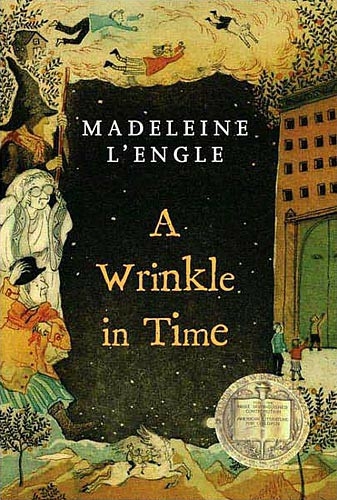As Olympic comebacks go, it’s hard to top. Last month, Jim Thorpe was reinstated as the only gold medalist in the pentathlon and decathlon at the Stockholm Games, more than a century after he won them.
Thorpe, a Native American, played in 1912 and was stripped of his titles only for breaking strict amateur rules. His family and other activists have long believed the decision was unjust and racist. In 1982, the International Olympic Committee (IOC) declared Thorpe the joint winner of both events, but did not restore his Olympic records. Finally, on the 110th birthday of Thorpe winning the decathlon, it recognized him as the outright winner of both events.
The account of how Thorpe was robbed forms a central chapter in Path Lit by Lightning, David Maraniss’ new biography of the man who—gifted at athletics, baseball, football, skating, and even ballroom dancing—was named the Associated Press athlete. of the half century in 1950.
Maraniss, a Pulitzer-winning journalist and author, tells how Thorpe returned from Stockholm to a ticker-tape parade in New York, but his medals were stripped when it was revealed that he had paid $25 a week to play minor league baseball.
Maraniss points out that hundreds of college athletes played summer baseball, but most, including future President Dwight Eisenhower, did so under pseudonyms. Thorpe used his real name, which appeared in North Carolina newspapers. When the scandal broke, coaches and officials lied to save their skins. Adding to the unfairness, the complaint against Thorpe came after the IOC’s own 30-day deadline.
The impact on Thorpe was devastating.
“He was a pretty stoic figure, but I’d say losing the medals and losing his first son, his namesake [who died of polio at age three], were the two most heartbreaking moments of his life,” he says. Maraniss, in the backyard of his northwest Washington home.
“In a way, he remained the respected, great athlete, yet he was screwed and he thought it was part of being an Indian – that’s why it happened. So it definitely made a deep impression on him. As he got older “I think it became more and more important for him to try and restore those medals. It didn’t happen in his lifetime.”
Maraniss, now 73, associate editor at the Washington Post and visiting professor at Vanderbilt University, is perfectly placed to measure politics in sports and the sport of politics. He has written biographies on Bill Clinton and Barack Obama, Puerto Rican baseball great Roberto Clemente and respected soccer coach Vince Lombardi. What is the difference between writing a political or sporting life?
“I try to use the same methodology for all my books, so the differences aren’t so much between a president and a sports figure, but between someone who is alive and someone who is dead. Clinton and Obama were both alive when I wrote about it, so that took care of other issues and made me look at it in a different way.
“I see it the same way, a way of writing history through the life story of someone I’m interested in. And of course politicians and athletes both have lives based on competition, victories and losses, trying to to figure out how to survive. All those elements are the same.”
Thorpe fit the bill. Maraniss would put him on a “Mount Rushmore” of American athletes alongside Muhammad Ali, Billie Jean King and Babe Ruth, Willie Mays or Hank Aaron.
“Here was an opportunity not just to write about the phenomenal athletic experience, but to use his life to write about the Native American experience, because from his birth to his death, it was truly the pivotal period when America tried to outsmart the Indians. their ‘Indian’.
“He went through that whole period and went to the boarding schools, which have again become so much in the news. I think my motivation was that I saw in Thorpe everything I look for in a book: a dramatic story plus a way to illuminate history through that biography.”
Thorpe’s Native American name, Wa-Tho-Huk, means “Bright Path”. He was a member of the Sac and Fox Nation and was born in Oklahoma in 1887. He was sent to the Carlisle Indian Industrial School in Pennsylvania, which opened in 1879 with the mission of “kill the Indian, save the man”.
Maraniss says, “It was the flagship school of the entire government’s efforts to assimilate Indians and basically strip them of all their culture, language, clothes, everything – make them as white as possible. They cut their hair, did they in military uniforms, they didn’t speak their native language and they converted to Christianity, trying in every way to make them part of mainstream white culture.
“It was a situation where the people who ran it had what they thought were good intentions – the only way we can really keep them alive is by depriving them of their ‘Indianness’, as opposed to the genocide that preceded it. Many of the proponents of those Indian schools considered themselves progressive; they thought they were advanced on racial issues and this was their attempt.
“It was completely misguided and it was cruel. Many of the Indians were essentially captured and sent to these schools against their will, including Carlisle. One of the first group of students were Sioux Indians just a few years after the Battle of Little Bighorn and they were sent to the school as adolescents and many believed they were sent there to die.
Hundreds died from abuse and lack of medical care. But Thorpe thrived.
“That’s part of the paradox. He wouldn’t be known today if he hadn’t been there. Without Carlisle, he wouldn’t have been an all-American football player. Without Carlisle, he wouldn’t have gone to an Olympics. So in that sense his fame rests on Carlisle. He managed to survive without losing his sense of identity.
“I write in the book – and I really started to believe this when I was finishing the book – there are so many points, especially in the last chapter of his life, where it’s tragic. Is it a tragedy then? I decided , no, it really is a story of perseverance.”
How did Thorpe arrive at his own cultural heritage long before the term “identity politics” was coined? When he won his Olympic gold in 1912, he was the first Native American to do so, but he was not considered an official U.S. citizen.
“He didn’t like reservations, but he was very proud to be Indian. There is always a debate within the Native American community about reservations and sovereignty. He was constantly fighting for Indian rights in his own way when he was in Hollywood. He was particularly strong in organizing the Indians who are there to be represented with integrity in the movies, as well as playing Indians as opposed to white people or anyone else who looks like an Indian.
“He gave a lot of speeches in his older years about what it was like to be an Indian and he fought for citizenship, he fought for the sovereignty payments, essentially reparations. He was not what you would call a political activist, but he was constantly pushing for Indian rights.”
At the 1912 Olympics, Thorpe won the pentathlon after finishing first in four of the five disciplines, winning the 1500 meters by almost five seconds. In the decathlon, he set a world record of 8,412 points, won the high jump in ill-fitting shoes and the 100 meters in 11.2 seconds in heavy rain. During the closing ceremony, King Gustav V of Sweden said to him: “Sir, you are the greatest athlete in the world.”
After his suspension as an amateur, married and employed, Thorpe signed with the New York Giants baseball team. In 1913 he embarked on a world tour.
Maraniss notes: “People in Japan and China and Australia and France and England, everyone knew Jim Thorpe. He was probably the most famous athlete in the world.”
Thorpe was also a football star at Carlisle School, playing professionally between 1915 and 1928. In 1968, he was inducted into the inaugural class of the Pro Football Hall of Fame. But as Maraniss writes, he struggled with alcohol, broken marriages and the need for money.
“Athletes die young, whether they die or not, right? Thorpe actually lasted longer than most, but he didn’t have much to fall back on. He wanted to become a trainer. He never got a real chance to do that.
“He was always looking for something and went from job to job in the last 30 years of his life. There is a moment in the early 1930s where photographers saw him working with a pickaxe and shovel in Los Angeles while he was building a hospital. He would be a greeter in bars.”
Thorpe had supporting roles in 70 films.
“It’s hard to find him, it’s just fleeting for most of them. Sometimes the ads said “with Jim Thorpe” and you saw him for about five seconds. Very rarely did he have speaking parts. In some of them it was a white screenwriter’s version of what an Indian would say.”
This culminated in Jim Thorpe – All-American, a 1951 biopic starring Burt Lancaster and directed by Michael Curtiz of Casablanca fame, which made Thorpe less money than it could have. Maraniss has seen it several times.
“My basic conclusion is that it’s told from the hypocritical perspective of [Carlisle football coach] Pop Warner. That’s his biggest mistake.” If only Jim hadn’t worried about being Indian, if only he had assimilated more, if if only he had listened to Pop Warner, he would have been a success.” It eliminates all the other structural things he had to do with his life, it’s clearly seen through a white lens.”
Thorpe died of a heart attack in a trailer in 1953. There was yet another twist. Rather than be buried in his home state of Oklahoma, as his will requested, his third wife effectively auctioned his body to two struggling towns in northeastern Pennsylvania that were willing to change their names to Jim Thorpe. He remains there today.
Maraniss explains: “She comes up with this ingenious, manipulative plot to convince them to change their name and they will get the mausoleum. They bought it and it’s still there, a place he’d never been in all his life. It couldn’t be more random than Jim Thorpe, Dad.
“I was there on a rainy day, so it looked particularly bleak. Other people have gone other times and it is in the eye of the beholder to some extent. Muhammad Ali visited there when he was training at Deer Lake and wanted to pay tribute to Jim Thorpe. He was touched by it, but eventually he thought, poor Jim Thorpe.”
Legal challenges from Thorpe’s family and Native American groups have failed. Maraniss says, “I consider it an insult to the Sac and Fox Nation that he is not in his home country where he said he wanted to be.”
Thorpe’s monuments now include his restored Olympic gold medals and Maraniss’ biography. The author, a genius Midwesterner, has managed to use the story to hold up a mirror to the nation, warts and all.
“It says a lot of bad things about America, but it’s part of American history. I try to be honest with it. This country tried to exterminate the Indians and it failed, and society and life tried to exterminate Jim Thorpe, but he survived.
“There are many levels of this story in terms of the Indian schools, the way white society treated him all his life, but in the end it is a story of survival. Both the man and the myth survived.”
Path Lit By Lightning is published in the US by Simon & Schuster



